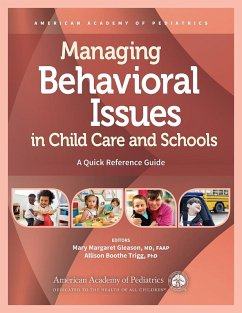This new quick reference guide provides child care directors, teachers, and caregivers with essential information on managing emotional and behavioral issues in group care settings. Topics cover social-emotional development, biting, napping difficulties, post-traumatic stress disorder, gender development, self-stimulation behaviors, and more. In addition to behavioral issues commonly seen in small children, epigenetics, medications, toxic stress, adverse childhood experiences, and how to help children who have undergone traumatic experiences are touched on by the editors. The book contains 25 quick reference sheets on topics such as ADHD, ASD, depression, tantrums, and separation anxiety. In addition, sample daily report forms, medication forms, and other informative documents to support working with young children are also included in this comprehensive guide. Case studies are also presented on various difficult situations with small children in a classroom setting and discuss how these situations might be handled.
Bitte wählen Sie Ihr Anliegen aus.
Rechnungen
Retourenschein anfordern
Bestellstatus
Storno









